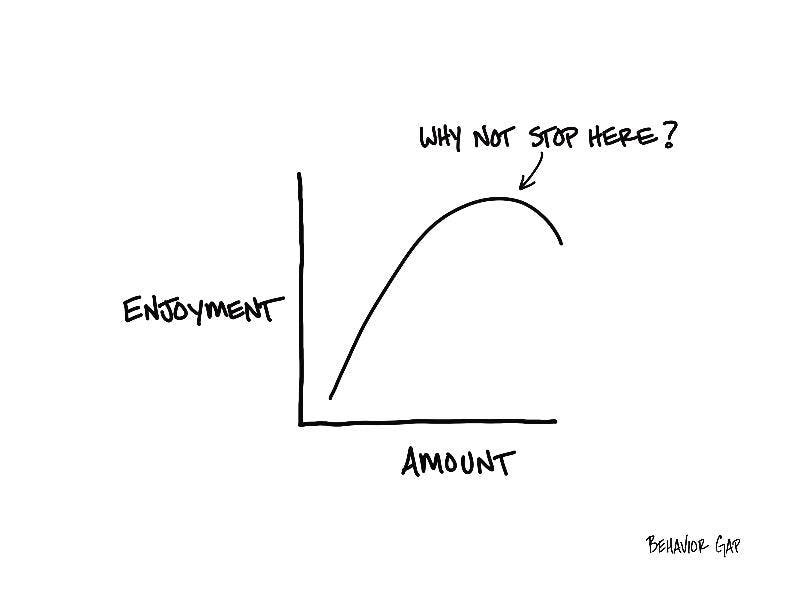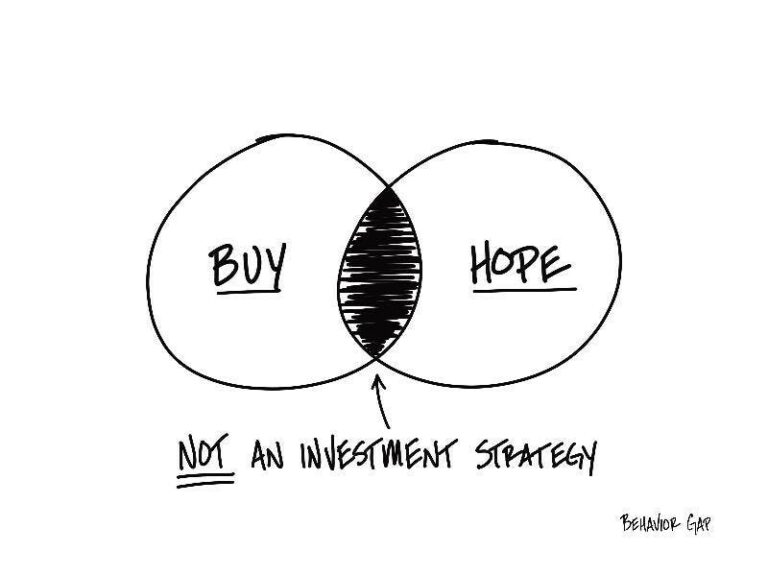
Carl Richards is a Certified Financial Planner™ and creator of the Sketch Guy column, appearing weekly in The New York Times since 2010. The following article is reproduced with permission from his weekly newsletter and his website can be found here.
Greetings, Carl here.
I absolutely LOVE Jeni’s Salty Caramel Ice Cream.
Sometimes, on the way home from work, I’ll stop at the grocery store, buy a pint, and eat it.
That’s right. The whole thing.
Yes, I know. That’s a LOT of ice cream.
I’ve noticed that a very interesting thing happens when I do this:
Bite 1: Best thing in the world, ever.
Bites 2–10: Really good.
Bites 11–15: Good.
Bites 16–20: Meh.
Bites 21+: Okay, now I’m sick.
I learned this lesson the first time I ate a pint of Jeni’s in a single sitting.
And yet, for some reason, I still occasionally repeat the experiment.
Of course, this phenomenon doesn’t only occur with ice cream. This is a well-documented economic principle called Marginal Utility, and (you guessed it) it applies to money, too.
Just like ice cream, beyond a certain point, having more money will not lead to more security, freedom, and happiness.
Fact.
The academic literature on that is clear.
My question is: Why do we devote so much of our time, energy, and attention to having more?
Wouldn’t we maybe be better off if, instead, we focused on having enough?
…
-Carl
P.S. As always, if you want to use this sketch, you can buy it here.


